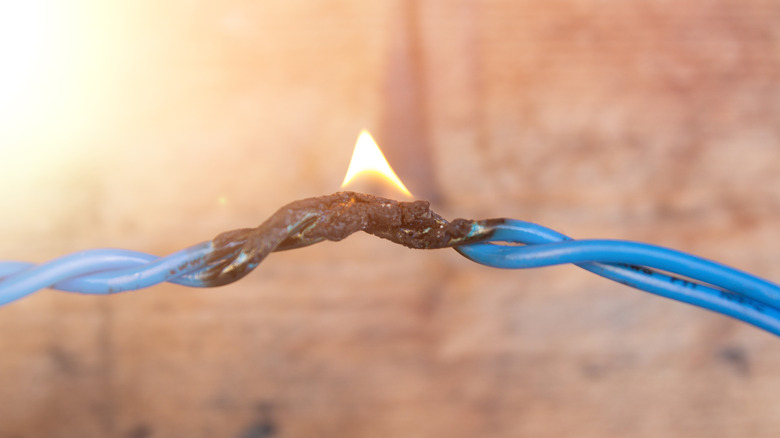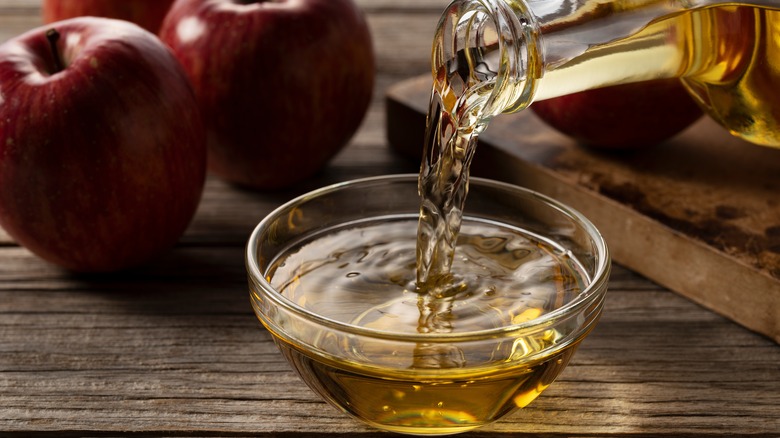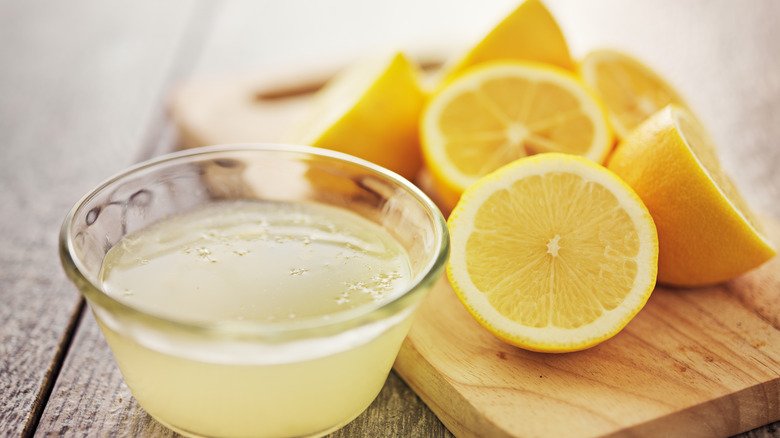The Easiest Ways To Clean Burnt Copper
Burnt copper is an unsightly scene. Copper wiring, decorations, and even cooking utensils can take on a dull, blackened appearance if they're exposed to heat with any regularity. Le Moyne College reports that direct flame or even high heat applied to a copper surface results in a chemical reaction that creates copper oxide. Therefore, the black skin that has developed on your copper item is simply a coating and not a structural change to the object itself, as is the case with iron rust.
In truth, it's actually quite easy to remove this blackened film from a copper pot, or any other copper item that you may have in your home. All that's required is that you create an acidic environment to submerge the affected area. Acidity can strip away this outer layer and leave you with a stunningly bright copper object that looks just as good as when you first brought it into your home. Of course, it's important to remember that an acidic solution creates its own chemical reaction when copper material is added. Therefore, you'll need to follow through with a couple of additional steps once you've successfully stripped away this flaw on the surface. Continue reading to learn about the easiest options for cleaning burnt copper.
Boiling water and vinegar
Regardless of the exact nature of your needs, perhaps the easiest way to remove the effects of burning from your copper materials is with boiling water and vinegar. A solution of boiling water and vinegar is easy to make and only requires a pan and your stove. The light acidity of simple vinegar provides an immense cleaning power that is often unmatched when trying to remove stubborn stains or even bad smells from certain features of your home.
Adding vinegar to a pot of boiling water and then submerging the copper object in the pot immediately starts to dissolve the burnt coating from your item. Tree Hugger notes that you might need to leave the item submerged in this pool of boiling vinegar water for a few minutes or perhaps even a few hours. The best course of action here is careful patience. Obviously, it's important to continuously check on the progress because the effects of evaporation can leave the item frying in the bottom of the pot if you aren't careful. Ensuring that you have enough water and vinegar to get the job done for the entire duration of this cleaning process is important.
Once the process is complete, take the pot off the stove and let the solution cool down. You won't want to touch copper while it's hot, but once it has had a chance to cool, all that's left to do is give the item a rinse in cool water and dry it off.
Salt and lemon juice
However, it's possible that this initial attempt at cleaning a copper object doesn't completely remove the burnt texture. For the most stubborn stains, you'll want to create an even more acidic solution. A mixture of salt and lemon juice creates a violent reaction on the copper object's surface and can strip away the blackened layer in no time at all.
It's important to remember that under normal circumstances, lemon juice should not be used on cast iron and other reactive metals, like copper, according to Epicurious. This means that you'll need to clean away any residue from the lemon and salt solution as quickly as you can once the reaction has completed, and this can be done with a base solution of water and baking soda. Lemon juice brings a huge volume of acidity to the mix here, and if you don't thoroughly clean the copper surface after you finish using it, it may continue to react with your copper wire, pan, or decoration. On cooking equipment, this can produce a reaction that may affect the taste of your food. Regarding wiring, all kinds of problems can arise if your copper wire is compromised by a continuous acidic reaction.
With either of these approaches, after you've rinsed away the solution and dried the object, you should be left with a sparkling, copper surface that has completely lost dullness brought on by a burn.


